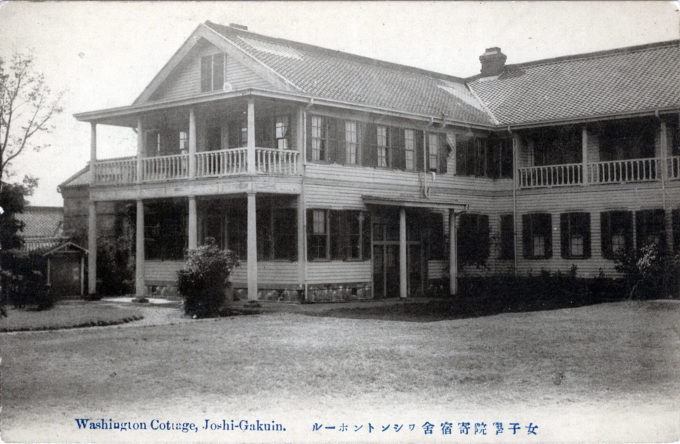
“Washington Cottage, Joshi-Gakuin”, Tokyo, c. 1910. The Graham Seminary (1873) and the Sakurai Jo Gakko (1878) were merged in 1889 to form Joshi Gakuin, a Presbyterian mission school for girls in Tokyo established by Julia D. Carrothers.
“The Joshi Gakuin opened in 1890 with 130 pupils; the number now in attendance is 180. Of the 180, 87 are day and 93 are boarding pupils … During the past ten years there have been in attendance 219 day and 210 boarding pupils; in all 429, the majority of whom have continued in the school for at least several years.
“So that simply from the point of view of numbers, the opportunity to exercise personal Christian influence has been very great. It should be noted too once more that the past ten years include the years of the Reaction1.
“The school is organized in three departments: The Preparatory, covering four years; the Academic, covering four years; and the Advanced Course, covering two years. Socially the pupils come from all classes. During the ten years perhaps thirty have come from the families of the nobility, a few have been the daughters of some of the most wealthy men in Japan, and a few have come from among the poor it being a principle of the school that it shall not be exclusive.
“But the majority of the pupils have been from the upper middle class. Their fathers are bankers, physicians, lawyers, ministers, teachers, officials, well-to-do farmers and, of recent years, more and more merchants. All classes have mingled together without friction.”
– Annual Report of the Board of Foreign Missions of the Presbyterian Church, by Presbyterian Church in the U.S.A., Board of Foreign Missions, 1917

